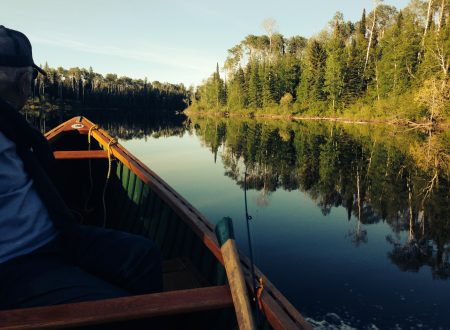On April 17, 2014, the Federal Court of Appeal released an appeal decision of a case called Daniels v Canada, 2014 FCA 101. It ruled that the Métis are within federal jurisdiction because they come within the definition of “Indians” in s. 91(24) of the Constitution Act, 1867. The main plaintiff and organization behind the case is the Congress of Aboriginal Peoples.
What is Section 91(24)?
The law that made Canada its own country in 1867 sets out different powers to the federal government and provincial governments. This law was originally called the British North America Act, and is now called the Constitution Act, 1867. Section 91(24) of this document says that the federal government has power over the subject matter of “Indians, and Lands reserved for the Indians.” The Daniels case was about who is included within the meaning of “Indians” under this section.
Canada has a number of different major groups of Aboriginal peoples: First Nations, Inuit, Métis, and non-status. There are a number of different constitutional laws (s. 91(24); s. 35 of the Constitution Act, 1982; treaties) and other laws (including the Indian Act) about Aboriginal peoples, each with different purposes. Each also has its own scope, defining the range of people it applies to. The Daniels case deals only with one law, s. 91(24) of the constitution.
It is important to keep in mind that the Daniels decision is only about s. 91(24), i.e. it is about the scope of federal powers. It is not about other laws. So, it does not say anything about things like who has status under the Indian Act, or who has aboriginal or treaty rights under s. 35.
Who falls under Section 91(24) according to Daniels?
Daniels found that the scope of the federal power over “Indians and Lands reserved for the Indians” is very broad, and applies to a wide range of people who identify as Aboriginal in one way or another.
- It was already clear that s. 91(24) applies to First Nations people who have status under the Indian Act (“status Indians”).
- In 1939, the Supreme Court held that s. 91(24) also applies to Inuit people.
- In this latest case, Daniels, the Federal Court held that it also applies to Métis people
- The trial decision in Daniels had declared that First Nations people who do not have Indian Act status (“non-status Indians”) also came within the federal power. The Court of Appeal refused to issue such a declaration since Canada had conceded that non-status Indians did come within federal power, and there was therefore no point in issuing such a declaration.
The next question is, who are Métis? The trial court in Daniels had taken a very broad approach, essentially including anyone who has an ancestral connection to that group, self-identifies, and is accepted by a Métis community, association or organization. While not directly over-ruling this, the Court of Appeal expressed concerns about the possible interpretation of the trial Court’s definition, and stated that there was already a working definition of Métis for the purpose of Aboriginal rights within s. 35 of the Constitution Act, 1982, and that the definition used for the purposes of federal jurisdiction should be in accordance with that. In summary, that means the Métis are “distinctive peoples who, in addition to their mixed ancestry, developed their own customs, way of life and recognizable group identity separate from their Indian or Inuit and European forbearers [sic]”.
What does this mean?
There are still lots of questions to consider about this case. Some of the questions include:
- Will Daniels allow Métis to obtain greater access to federal programs & services?
Not directly. Generally-speaking, and as a matter of practice, most programs and services for First Nation “status Indian” people living on a reserve are funded by the federal government. Most programs and services for people living off a reserve – whether or not they have Indian status – are normally funded by provincial governments. (Some people assume that federal programs and services provide more to First Nations than other people receive. In fact, the opposite is often true.)
A small number of federal programs and services apply to people with status who live off reserve. People in the territories (who are, by definition, off reserve) also have unique arrangements. Daniels at least provides an argument that Métis should receive some special federal supports too, and this seems to have been a reason why the plaintiffs brought the case. However, the case does not decide this directly. There will also be obstacles. It is probably not possible to force Canada to exercise the powers that s. 91(24) gives it, if it chooses not to. Claims of discrimination would also face many hurdles, since unique programs to benefit specific disadvantaged groups can be constitutionally justified (see Lovelace).
This is brought into sharp focus by the way the Court of Appeal considered non-status Indians. It refused to issue a declaration that non-status Indians came within federal jurisdiction because this proposition was not contested. In contrast, the Court did issue a declaration that the Métis came within federal jurisdiction because it accepted that jurisdictional arguments were hampering the advancement of Métis rights. So at one level, the Court put the Métis in the position that non-status Indians have always been. That is, now there is no doubt that both groups are under federal jurisdiction. However, generally speaking, non-status Indians have had no more (and probably less) success that the Métis in getting the federal government to pay attention to their rights.
- Will Daniels affect the ability of Métis and non-status Indians to hunt and fish, or exercise other rights?
Not directly. Some Métis communities already have established such rights. For Métis who are not part of those communities, this decision does not say anything directly about their harvesting rights, or any other aboriginal or treaty rights.
However, there are many open questions about how provincial laws – such as game laws and others – will apply to Métis if the Daniels analysis is followed. Coming under s. 91(24) does not mean that provincial laws no longer apply; provincial laws of general application will still apply up to a point. That point is where the provincial law impairs the “core” of the federal jurisdiction. In other cases dealing with this section, courts have called this “the core of Indianness” (awkward as that is). There is a lot of uncertainty around what that means.
- Does Daniels give the federal government a fiduciary duty or a duty to consult and accommodate?
Not directly. The plaintiffs asked the court to declare these duties, and both the trial Court and the Court of Appeal declined. Those issues will have to wait for specific circumstances to arise before they can be determined.
What happens next?
The federal government is likely to seek leave to appeal this decision to the Supreme Court of Canada. The plaintiffs might also seek leave to appeal the exclusion of non-status Indians from the declaration by the Federal Court of Appeal. Other parties might also participate as interveners. We will be paying attention to this case as it continues.
By Judith Rae and Roger Townshend
Related Posts

OKT Podcast - Overview of the Reference on Bill C-92
Tuesday, February 20, 2024
We are excited to introduce the inaugural episode of the OKT podcast!
In this debut installment, Jesse Abell, Krista Nerland, and Judith Rae discuss the intricacies…
Read More...
OKT proud to work alongside Inuvialuit on their landmark child and family services law
November 25, 2021; updated November 26, 2021
“For the first time in modern history, the Inuvialuit have passed a law for the Inuvialuit.” (NNSL Media, Nov. 24, 2021)
It’s…
Read More...
The Legal Imperative: Must versus Shall
(Posted March 11, 2021)
In normal conversation, if I tell you that you must do something, that would be understood as an imperative command. However, lawyers have undergone years of…
Read More...


